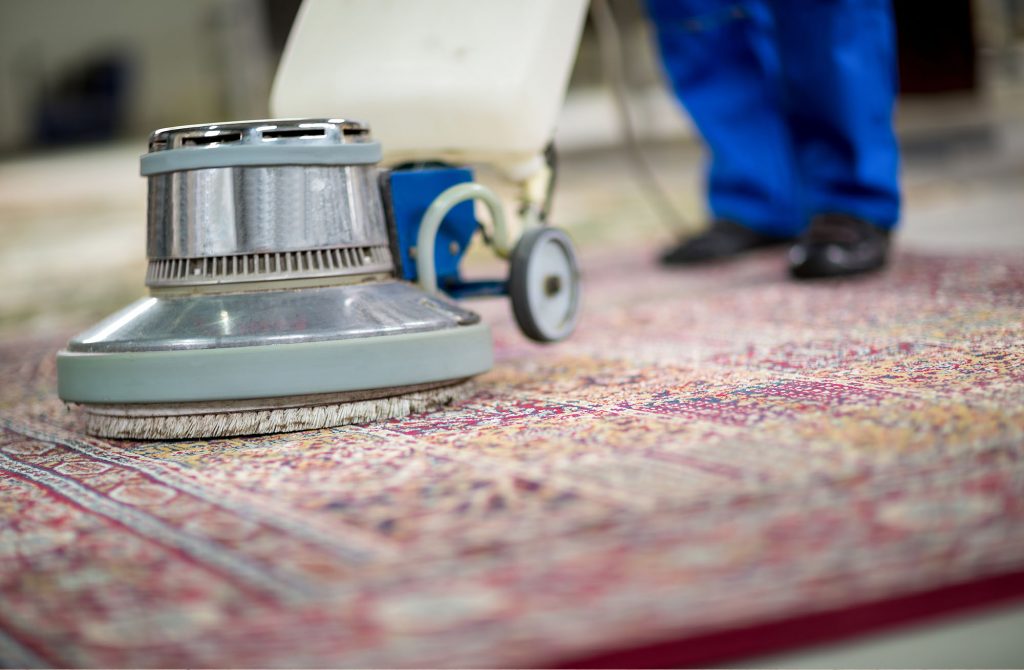Area rugs add warmth to flooring, add color and pattern to a room, and establish zones in your living area. However, stains and dirt frequently accompany area rugs, so knowing how to clean an area rug is essential.
The first step in cleaning an area rug is to figure out what kind of material it is made of. This is critical for extending the life of the rug, since different materials necessitate different area rug cleaning procedures and products. Our helpful area rug cleaning guide will walk you through the various types of rugs and provide you with suggestions and techniques for cleaning and stain removal.
According to Fortune Business Insights™ The global construction chemicals market size was valued at USD 42.32 billion in 2018 and is projected to reach USD 70.91 billion by 2026, exhibiting a CAGR of 6.7% during the forecast period.
Rug Cleaning Basics
The best approach to clean an area rug is determined on its size, structure, and material. Large area rugs should be treated as if they were a wall-to-wall carpet. As a result, the following care regimen will help the majority of rugs:
- Vacuum big area rugs to eliminate dirt: Vacuuming is the most crucial area rug cleaning process, just as it is with carpet. Vacuum both sides of a reversible rug. This gets rid of the dirt and filth that might cause your carpeting to wear out prematurely. Make sure not to vacuum any of the fringe. (When vacuuming a shag rug, turn off the beater bar to avoid tangling the long fibers.)
- Remove pet hair with a brush: A vacuum can often leave pet hair behind. Remove the hair using a hard brush, combing in the direction of the rug’s nap.
- Turn rugs once a year: Area rugs are subjected to increased wear and tear from foot activity and the sun. To level out the wear, turn them once or twice a year.
- Shake small area rugs: If the rug is small enough, shake it or beat it violently outside to remove dirt and grit. Shaking carpets outside is prohibited in certain regions, so check your local laws first.
Material-by-Material Guide to Rug Cleaning
Rugs of particular varieties require unique cleaning techniques. Care tags should be kept on the rug for easy reference. Pay special attention to the manufacturer’s instructions for deep rug cleaning the rug and utilizing a rug shampooer or cleaning equipment. Take care of specialty rugs by following these guidelines.
Rugs that are woven or braided can be cleaned in a variety of ways.
Before and after washing, inspect rugs for stitching breaks. Check the labels on little braided rugs to see if they may be washed. Place them in a zipped pillowcase or mesh laundry bag if they are. Rinse carefully after washing in cold water on a moderate cycle. Dry on a low putting in the tumble dryer.
Throw huge braided rugs on a vinyl or concrete floor, or place an old blanket beneath them, to clean them. Using a sponge, apply industrial rug cleaning foam to the surface and rub it in according to the manufacturer’s instructions. Rinse or vacuum the area to finish. Before putting the rug back on the floor, ensure sure it is thoroughly dry.
How to Clean Oriental, Antique, and Hand-Knotted Rugs
Antique and Persian runners are popular options for kitchens and other high-traffic areas, but they may require additional care. Vacuum a new Oriental rug in the same way you would a carpet or a wool area rug. When it comes to vintage or antique rugs, take extra precautions. Place a piece of nylon screen over the rug and weight it down with books or bricks to protect them from the vacuum. Using a vacuum cleaner, clean the screen. Alternatively, tie a piece of nylon mesh ($5) over the vacuum attachment and replace it as dirt builds. Once a year, get these rugs professionally cleaned. Rotate rugs to maintain even wear; direct sun exposure will fade them.
Bonus Tip
When buying antique carpets, find out as much as you can about the fibre content and manufacturing from the vendor. Request advice on how to take care of your pet.
Coir, Sisal, Rush, and Grass Rug Cleaning
Natural fiber rugs, such as coir, sisal, rush, and grass, have an open weave that enables dirt to filter through to the floor underneath them. They’re popular for mudroom rugs and welcome mats. Vacuum on a regular basis, removing the rug from time to time to vacuum the floor beneath it. If your rug is reversible, flip it every time you clean to ensure even wear.
Leave a room-size natural-fiber rug in situ to clear stains or discolorations. A plastic drop cloth and a towel are used to protect the floor underneath it. Using a gentle brush soaked in soapy water, scrub the spots. Rinse well with clean water. Cover the damp area with a towel. Dry the cleaned area as much as possible using a blotter. To speed up the drying process, use a handheld fan or a hair dryer. To clean tiny carpets, place them on a covered table or counter. Water weakens the fibres, so work swiftly and carefully to ensure that these carpets last as long as possible.
Sewn-together squares are used to make some natural-fiber carpets. Purchase a few more squares or a rug in a lesser size. If a rug square gets permanently soiled, cut the threads holding it together and replace it with a fresh square. Use heavy-duty carpet thread to hand-stitch it in place.
Rug Cleaning Sheepskin, Fur, and Hair-on Hides
Leave unscented talcum powder on fur, sheepskin, and hair-on-hide carpets for many hours after shaking. Shake out the talcum powder after brushing it through the hair. Depending on the length of the fur, repeat this step numerous times. Use a clean cotton towel bathed in lukewarm soapy water to clean the back of this sort of carpeting. Remove any dirt or spills using a damp cloth. Allow to dry thoroughly before reinstalling with a clean towel soaked in clean water.
How to Thoroughly Clean Rugs
Check the care label on a small rug to see if it should be dry-cleaned, spot-cleaned, or washed. It’s possible that a rug labelled “dry cleaning only” isn’t colorfast. Perform a test prior to spot rug cleaning in Melbourne. If a rug can be washed, do so on the gentle cycle in the washer. To prevent tangling, divide the fringe into many hanks and wrap each one with white string. Put the rug in a mesh washing bag or a zipped pillowcase and wash it in cold water on the gentle cycle to protect it from the agitator.
Wet rugs can be hung on a porch, patio, or breezeway over a clothes dryer, a slatted picnic table, or a stack of bricks. If a wet rug is hung over a single clothesline, its shape will be distorted as it dries. To preserve small rugs made of synthetic fibres that resemble carpeting, place them on a small worktable or counter and dry them with a drop cloth, old sheets, or towels.
Every 12-18 months, a thorough are rug cleaning is recommended. When using industrial rug cleaning products for the first time, test a small section of the rug to ensure it is colorfast and unaffected. Apply rug cleaning foam to a large rug on a vinyl or concrete surface and rub it in according to the manufacturer’s instructions. To finish, rinse or vacuum the area. Make sure the rug is completely dry before reinstalling it.
Dry-cleaning may be an option for small to medium-sized rugs; check the labels for care instructions.
How to Remove Stains from Rugs
When your rug becomes soiled, you must act quickly. Always remember to blot, not rub, stains and rug cleaning spills as soon as possible.
- Combine 1 teaspoon liquid dish detergent, 1 quart warm water, and 1/4 teaspoon white vinegar to clean alcoholic and soft beverages. Spray the stain with the solution, then rinse and blot dry.
- Coffee or tea stains: saturate the stain with the detergent mixture, rinse, and blot. If a stain persists, use a commercial spot carpet cleaner.
- Fat-based stains: For meals containing butter, margarine, or gravy, use a dry-solvent spot rug cleaning.
- Gum: Remove as much as you can, then use ice cubes in a plastic bag to solidify any remaining gum. Scrape the gum away with a spoon or a dull knife. Vacuum and spot clean with a dry-solvent if necessary.





More Stories
Decoding 5 Key Criteria for Picking the Best Plumbing Services
5 Signs It’s Time to Call a Plumber
Most Common Air Conditioner Repair Issues